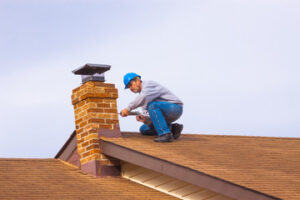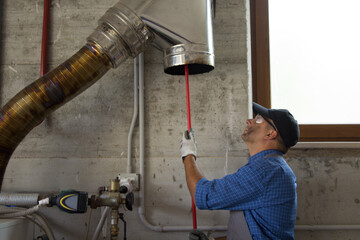When cleaning your chimney, you have to be aware of several factors. These include the cost, methods, chemicals used, and safety issues. Visit Website to learn about the various options available to you. You may also want to read about the safety issues with cleaning your chimney. A professional chimney cleaner can help you avoid a variety of risks and ensure that your chimney is safe to use.
The cost of a chimney cleaning depends on a number of factors. For example, the size of the chimney will affect the cost, as larger chimneys take longer to clean. In addition, the height of your chimney and whether it has a disposal system will affect the cost as well.
The height of the chimney will also affect the price of a chimney cleaning. Sweeps need to use ladders or lifts to access these high areas. Also, the more frequent the use of the fireplace, the more debris builds up. A buildup will prevent the smoke from venting properly, and it can also cause a fire.
When choosing a chimney cleaning contractor, make sure to ask for references. A good contractor should be able to show you pictures of completed jobs. In addition, they should be able to provide three verifiable references. Furthermore, you can also seek consumer reviews on the contractor from third-party websites.
Chimney cleaning is one of the most dangerous jobs and can cause injuries if not done properly. According to the Bureau of Labor Statistics, there were 5,300 fatal workplace injuries in 2019 alone. A majority of these incidents were related to falls, and nearly a third were fire-related. Additionally, many chimneys contain a high concentration of creosote, a byproduct of wood combustion, which is a probable human carcinogen.
Some homeowners choose to clean their own chimneys, but this can be difficult and require professional assistance. An additional service you may want to consider is using ashes from the fireplace to fertilize your plants and flower beds. Ash is an excellent source of calcium and other nutrients for plants. It is also important to trim trees overhanging your chimney, so they don’t fall on the chimney. Tree trimming costs are typically between $175 and $750.
There are various methods of cleaning a chimney. One of the most popular methods involves climbing onto the roof and cleaning the chimney from above. A ladder and an assistant are necessary for this method. Another method involves cleaning the chimney from inside the fireplace. However, this method is very messy, so you should hire an assistant for this job.
To clean a chimney from the inside, use a brush made of nylon or a long handle. It should be stiff enough to clean the chimney from all sides and reach all corners. Be careful not to scratch the pipe from the inside, as this will lead to a faster buildup of soot. You should also wear safety goggles to avoid any accidents. It’s a good idea to protect the walls, furniture, and windows from falling soot.
You can also clean your chimney using special chemicals. These are usually available in liquid, powder, or briquette form. These chemicals are applied to the chimney walls when burning firewood. These chemicals effectively remove soot from chimney walls without causing harm to people. Another way of cleaning a chimney is with a large diamond ruff.
If you want to clean your chimney manually, you can use a conventional hose and a brush. But if you want to use a chemical cleaning method, you must use a brush that is made of special materials. Chemical cleaning techniques may be a better choice for chimneys that are narrower in diameter.
To prevent soot from accumulating in your chimney, you can use a substance called “saltpeter.” This substance burns quickly and effectively, removing soot in hard-to-reach places. If you use this method, it’s important to follow the manufacturer’s instructions carefully.
The process of cleaning a chimney involves various chemicals that are applied in different ways. These chemicals can be used for various reasons, including preventing creosote buildup, reducing the risks of chimney fires, and reducing the health risks of chimney occupants. One of the most common chemicals is called a concentrated chimney sweep log. This chemical contains mineral additives that form volatile substances during combustion. These chemicals dissolve the hardened deposits in the chimney’s walls. They should be applied to the chimney regularly.
A chemical cleaner can prevent creosote buildup but cannot remove it completely. It is important to keep in mind that overuse of a chemical cleaner can damage the metal liner in a chimney and shorten its lifespan. Always read the manufacturer’s instructions carefully before using any chemical cleaner.

